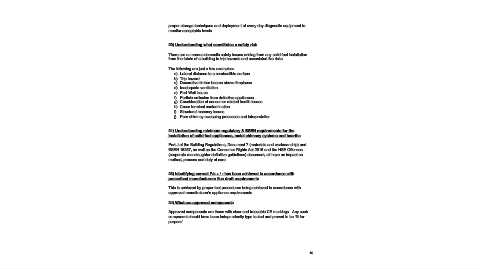Page 68 - Domestic Smoke Nuisance and Emissions Final_Neat
P. 68
proper storage techniques and deployment of every day diagnostic equipment to
monitor acceptable levels.
20) Understanding what constitutes a safety risk
There are numerous domestic safety issues arising from any solid fuel installation
from the fabric of a building to trip hazards and associated fire risks.
The following are just a few examples:
a) Lateral distance to a combustible surface.
b) Trip hazard.
c) Decorative timber beams above fireplaces.
d) Inadequate ventilation.
e) Part Wall issues.
f) Particle emission from defective appliances.
g) Consideration of consumer related health issues.
h) Cross terminal contamination.
i) Structural masonry issues.
j) Poor chimney sweeping processes and interpretation.
21) Understanding minimum regulatory & BSEN requirements for the
installation of solid fuel appliances, metal chimney systems and hearths
Part J of the Building Regulations, Document 7 (materials and workmanship) and
BSEN 15287, as well as the Consumer Rights Act 2015 and the HSE Offences
(corporate manslaughter definitive guidelines) document, all have an impact on
method, process and duty of care.
23) Identifying correct P/a + / - has been achieved in accordance with
prescribed manufacturers flue draft requirements
This is achieved by proper test procedures being achieved in accordance with
approved manufacturer’s appliance requirements.
24) What are approved components
Approved components are those with clear and traceable CE markings. Any such
component should have been independently type tested and proved to be ‘fit for
purpose’.
16

